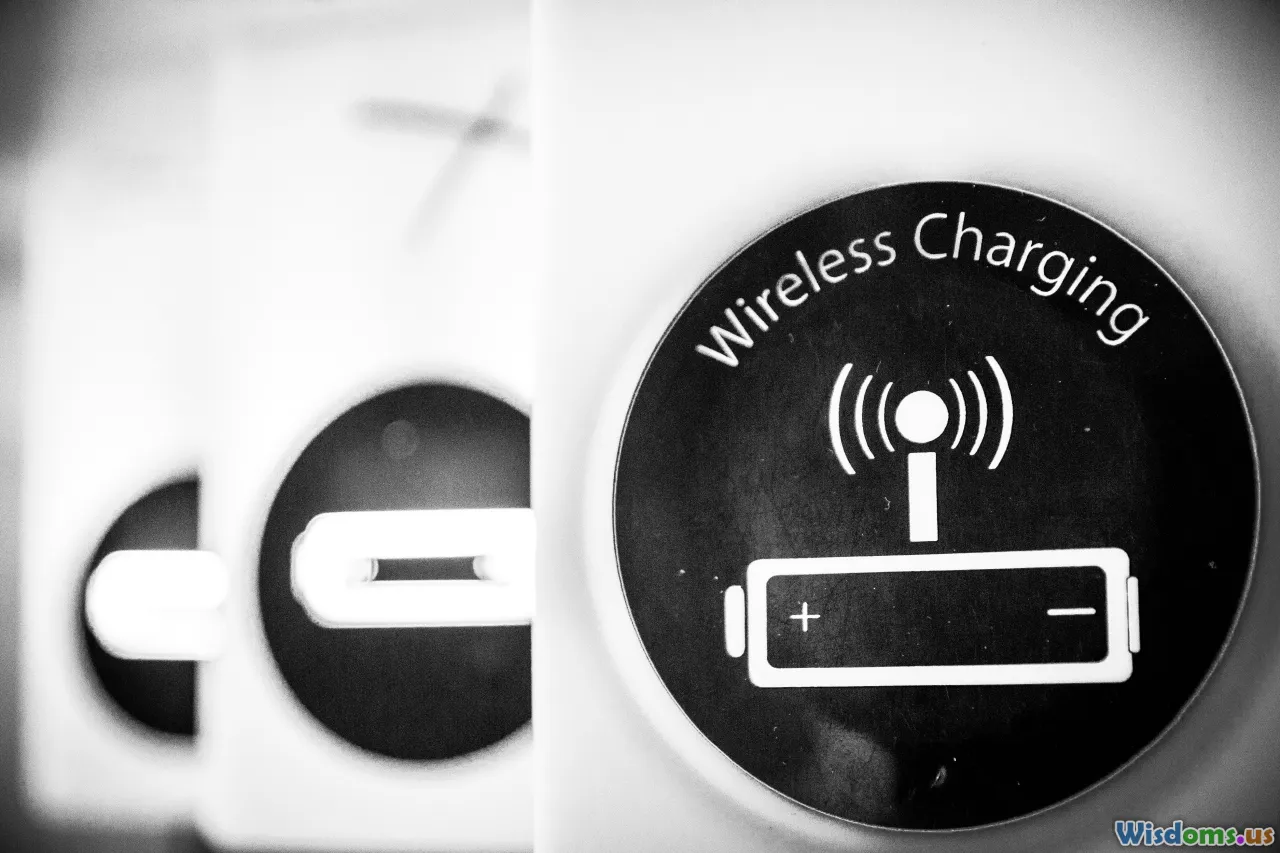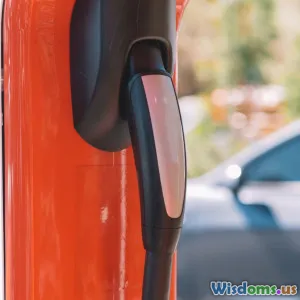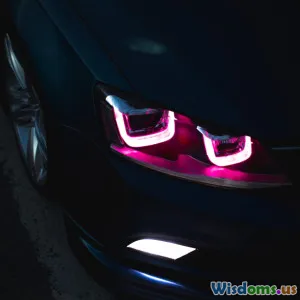
How Inductive Charging Could Eliminate Range Anxiety Forever
13 min read Explore how inductive charging may abolish EV range anxiety, enabling seamless, wireless energy transfer and transforming the future of electric mobility worldwide. (0 Reviews)
How Inductive Charging Could Eliminate Range Anxiety Forever
Introduction: The Invisible Lifeline for Electric Vehicles
Imagine driving your electric vehicle across a vast landscape, never worrying about whether you'll make it to the next charging station. Picture a world where city streets, highways, and parking spaces invisibly refill your car's battery as you drive or park—no cables, no waiting, and absolutely no range anxiety. It sounds futuristic, but the rise of inductive charging technology might make this vision a reality far sooner than you think.
In this article, we’ll unpack the science and promise of inductive charging, dive into cutting-edge deployments around the world, reveal its potential for erasing the age-old pain of range anxiety among electric vehicle (EV) users, and explore what still needs to happen before a wirelessly charged world becomes the new normal.
What Is Range Anxiety—and Why Is It Such a Big Deal?
For decades, automakers and marketers have extolled the virtues of electric cars. Yet, one fear lingers: range anxiety. This discomfort stems from the limited driving range of EVs compared with conventional cars, coupled with concerns over finding accessible, available charging infrastructure.
According to a 2023 McKinsey & Company survey:
- 46% of respondents ranked insufficient charging infrastructure as their primary deterrent to purchasing an EV.
- Among current EV owners, 37% still worried about getting stranded with a depleted battery.
This persistent worry constrains EV adoption, especially for consumers who drive long distances or don’t have easy access to home charging.
The Science Behind Inductive Charging
A Primer: Wireless Power Transfer
Inductive charging uses the principles of electromagnetic fields to transfer energy wirelessly between two coils—a transmitter (in the ground) and a receiver (in the vehicle). The system generally involves:
- A charging pad: Installed in parking lots, garages, or roadways.
- A vehicle-side receiver coil: Integrated beneath the EV.
- Power electronics: That manage the safe, efficient transfer of energy.
Unlike traditional plug-in charging, energy is sent via magnetic fields, meaning drivers simply park or drive over a pad and energy flows automatically to the car’s battery.
Not All That New—But Now Scalable
While Nikola Tesla demonstrated the fundamentals of wireless power in the late 19th century, real-world implementation for vehicles is only recently attainable. Advances in resonant magnetic coupling have led to more efficient energy transfer—now reaching efficiencies above 90% in controlled scenarios.
The Society of Automotive Engineers (SAE) recently issued a technical standard, SAE J2954, paving the way for interoperability across automakers and charging equipment manufacturers. This standard supports three wireless power levels:
- 3.7 kW (for home use)
- 7.7 kW (most passenger cars)
- 11 kW (future-proof for larger vehicles)
Inductive Charging in the Real World: Early Deployments
Qi-Style Wireless at Home
High-end brands including BMW and Mercedes-Benz have already introduced wireless charging pads for specific plug-in hybrid models. BMW’s 530e iPerformance is a notable example. Drivers simply park over a garage pad, and charging commences automatically—no plugging in required.
"This new technology adds an element of futuristic ease for our customers, smoothing their everyday experience with electric motoring." – Peter late, Head of BMW Charging Infrastructure
Dynamic Charging: Power on the Move
The true game-changer comes when inductive systems are embedded in roads themselves—a concept known as "dynamic wireless charging". Vehicles are charged not only when parked but also while driving.
Case Study: Sweden’s Electrified Road
- In 2022, Sweden debuted a 2 km stretch of e-road south of Stockholm, where commercial electric trucks receive power from conductive rails embedded in the surface.
- The next phase, for the nearby city of Marsta, will integrate inductive charging coils to support buses and passenger vehicles.
- Analysis from the Swedish Transport Administration showed trucks needed up to 90% smaller batteries when regularly topped up during trips.
Israel’s Electreon System
Israeli company Electreon has deployed inductive strips beneath public roads that charge electric buses in Tel Aviv as they drive their routes. In March 2023, Electreon and the Michigan Department of Transportation launched America’s first wireless public roadway charging pilot in Detroit.
Cities as Energy Partners
Many city governments are partnering with private industry and universities, exploring how to make streets smarter and cleaner. Inductive charging is fast becoming a crucial piece of this urban innovation wave—a driverless taxi in a future metropolis, rolling through wireless-charged streets, might never need to plug in.
Key Benefits: Why Inductive Charging Could Erase Range Anxiety
1. Ultra-Convenience—No More Plug Anxiety
One of the primary hurdles to traditional EV adoption is simple forgetfulness or inconvenience: drivers might forget to plug in at home, be discouraged by tangled cables, or find charging stations blocked or nonfunctional.
Wireless, "set-it-and-forget-it" charging reduces human error. It also makes EV use more accessible to:
- Drivers with mobility challenges
- Commercial fleets like taxis and delivery vans needing frequent, reliable charges
- City residents with no dedicated parking
2. Infrastructure Scalability and Urban Integration
Inductive chargers are unobtrusive—buried in parking lots, bus stops, taxi stands, or even major roads. This flexibility:
- Frees up valuable city space otherwise lost to charging stations
- Reduces vandalism and trip hazards
- Enables high-frequency, rapid top-ups rather than long charging cycles
Major metro projects, such as Oslo's wireless charging for taxis, harness this potential. Since 2019, the city has installed plates at taxi ranks so cars can constantly charge while waiting for fares, maximizing operational uptime and eliminating range concerns.
3. Enabling Smaller, Lighter, Cheaper Batteries
If EVs can continually top up on the move, their battery capacity can be reduced—dramatically dropping manufacturing costs, environmental impact, and vehicle weight. According to the International Energy Agency (IEA), EV batteries account for 30–40% of a vehicle’s total price and are responsible for significant environmental footprint.
Regular inductive "sips" of power may allow vehicles to run reliably with much smaller batteries:
- Lighter cars boost range and efficiency.
- Lower battery costs could accelerate mass market EV adoption.
4. Economic & Environmental Ripple Effects
Deploying wireless charging at scale could:
- Cut the carbon footprint of urban mobility
- Spur utility providers to invest in more renewable, distributed energy resources
- Create new value chains for tech manufacturers, construction, and maintenance
The Road Ahead: Hurdles, Challenges, and Innovations
Technical Limitations
-
Energy Loss: Wireless transfer is slightly less efficient than wired connections, traditionally losing 5–10% energy to heat.
- Innovations in coil materials and alignment continue to close this efficiency gap.
-
Standardization: Early wireless systems were proprietary. The new SAE standards are a game-changer, but building truly universal platforms that serve different car brands, vehicle types, and voltage levels remains a work in progress.
High Capital Costs
Installing in-ground infrastructure can cost more than conventional chargers. For example, the Electreon project in Sweden required €10 million for a two-kilometer stretch. Sustainability hinges on economies of scale and forward-thinking urban planning—linking e-roads with city renewal and construction programs.
Safety and Cybersecurity
Wireless power must meet strict safety standards to prevent EM interference with pacemakers, electronics, or wildlife. Additionally, networked “smart grids” increase cybersecurity risks—proactive regulation and robust system design are crucial.
Adoption Curve: Who Goes First?
Commercial and public fleets (buses, taxis, delivery vans) are prime early adopters—they repeatedly travel fixed routes, magnifying the benefits of efficient top-ups.
In the private realm, settling parking standards, consumer habit shifts, and market competition will guide the pace of early adoption. As with any "chicken and egg" scenario, public policy and incentives will play a key role.
Realistic Timeline: When Will the Dream Become Reality?
Experts predict steady progress:
- By 2025: Major cities in Europe, the US, and Asia will have functional pilot stretches of wireless-charged roads for buses or shuttle fleets.
- By 2030: Commercial rollout to select highways and city centers; luxury vehicles adopt wireless as a standard feature.
- By 2040: Widespread integration with major roads, parking sites, and even suburban or rural infrastructure as costs fall and compatibility rises.
Adoption mirrors that of WiFi in public spaces: slow, expensive rollout at first, but soon ubiquitous and indispensable.
Quotes from Industry Leaders
"Dynamic wireless charging will allow EVs to travel unlimited distances as long as they remain in motion—effectively ending range anxiety forever." – Oren Ezer, CEO of Electreon Wireless
“Wireless charging is a ‘Trojan horse’ for scaling electric fleets. Operators can optimize battery size, cut costs, and keep vehicles in constant motion.” – Chirs Zheng, Senior Engineer, Michigan Department of Transportation
Conclusion: The Future Is Closer Than You Think
Inductive charging is more than a technical novelty—it’s a potential paradigm shift for global mobility. By quietly weaving power directly into the places we drive, park, and live, it promises to dissolve boundaries between vehicle and energy—invisible and automatic, reliable as Wi-Fi.
This leap doesn’t just kill range anxiety—it could catalyze mass EV migration, reshape urban planning, and finally untether drivers from the last inconvenience holding back a cleaner, smarter transport future.
As cities, automakers, and innovators join forces worldwide, the vision of "charging without thinking" edges closer to reality every year. The only question remaining is: Are we ready to wirelessly power the next era of mobility?
Rate the Post
User Reviews
Popular Posts















